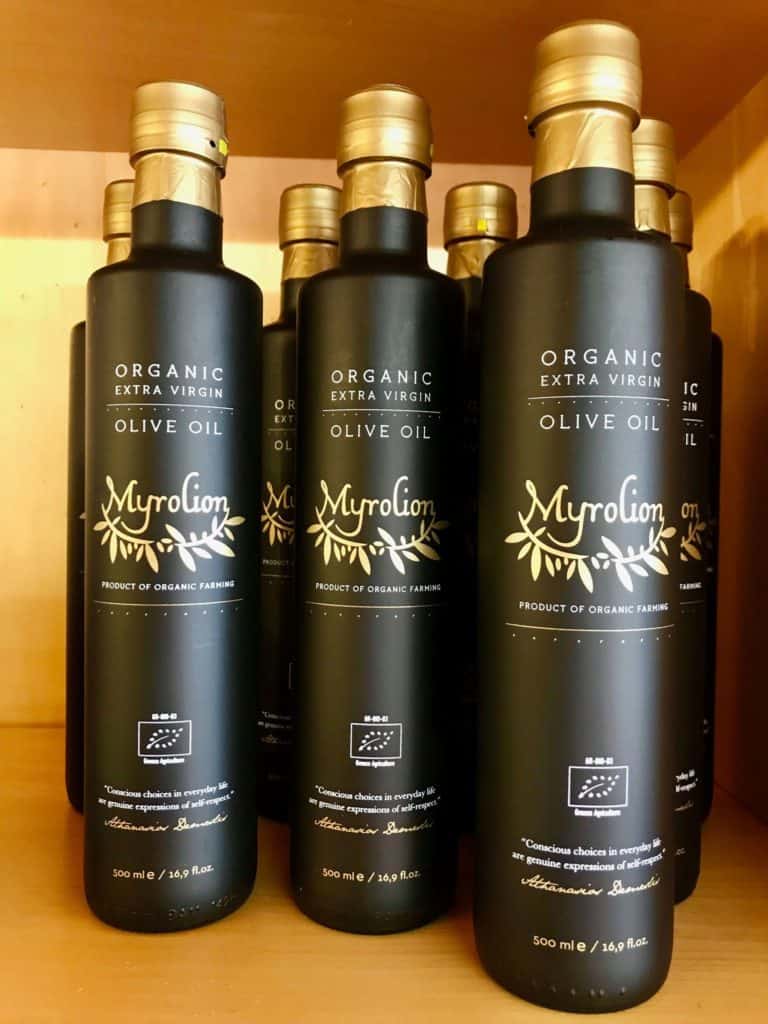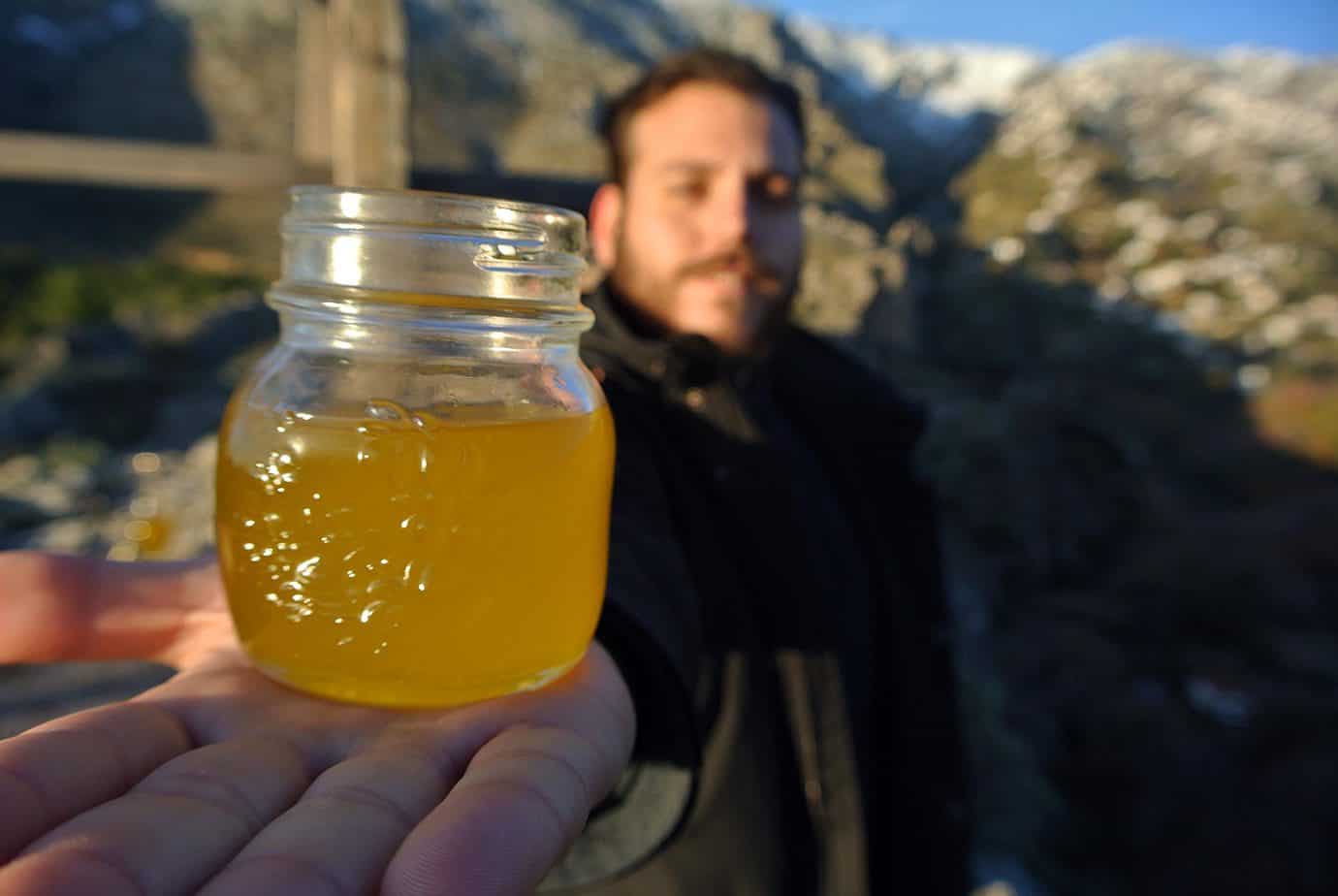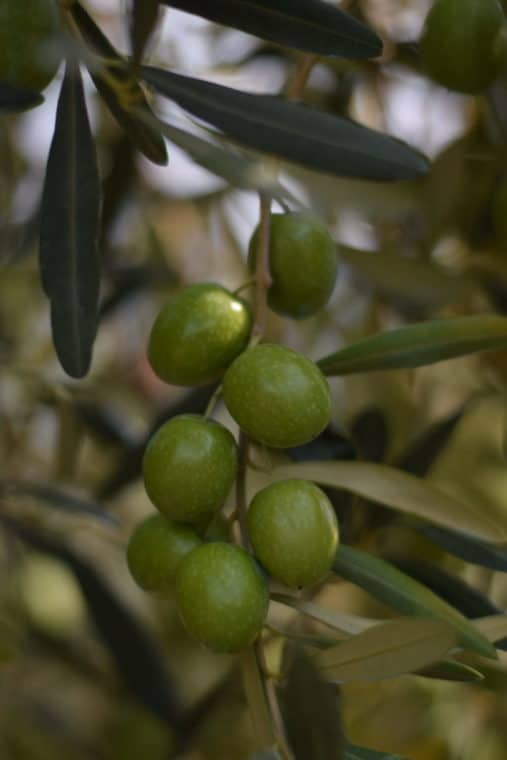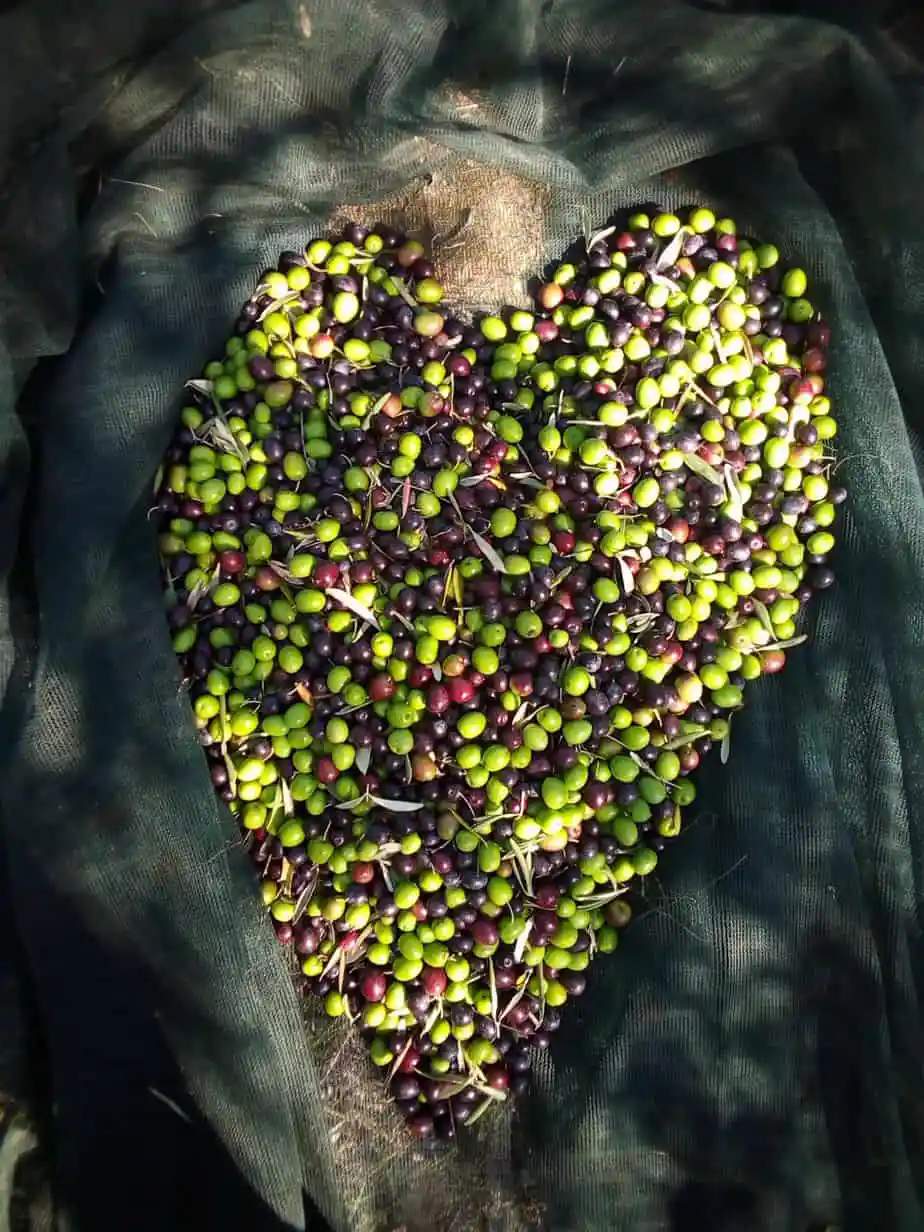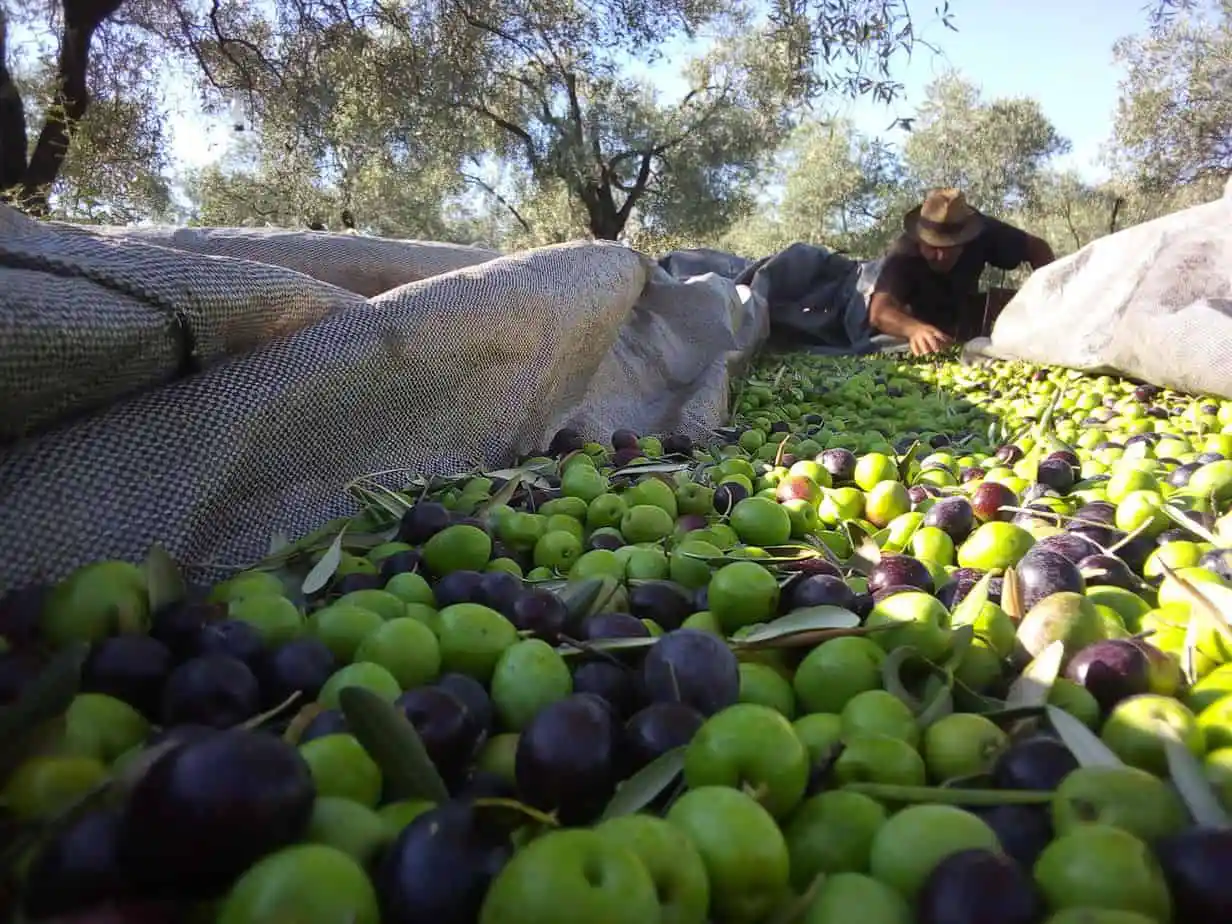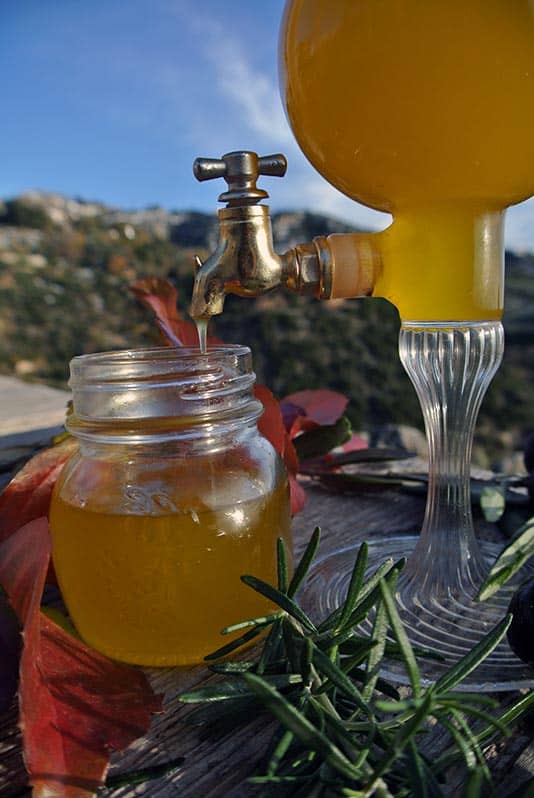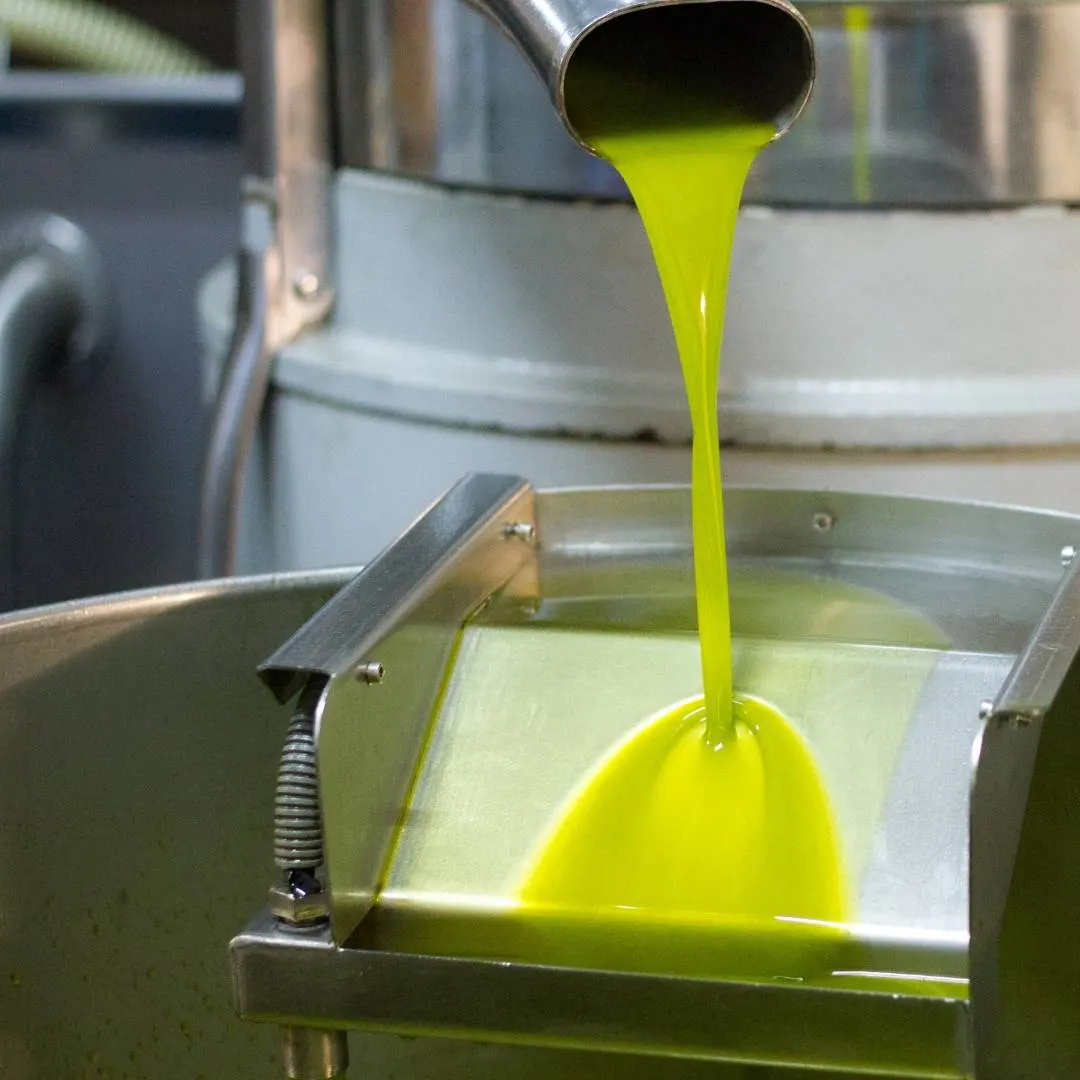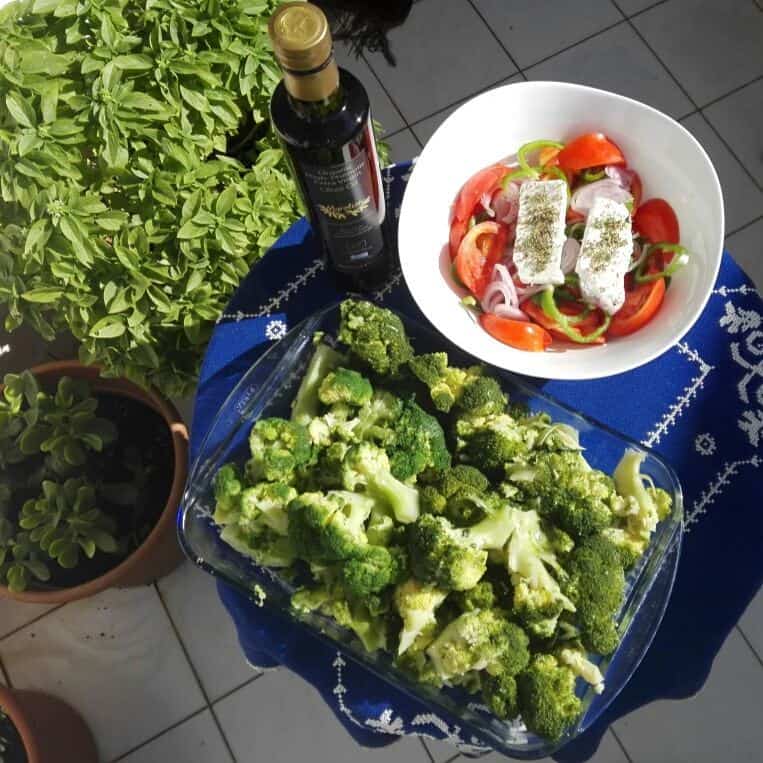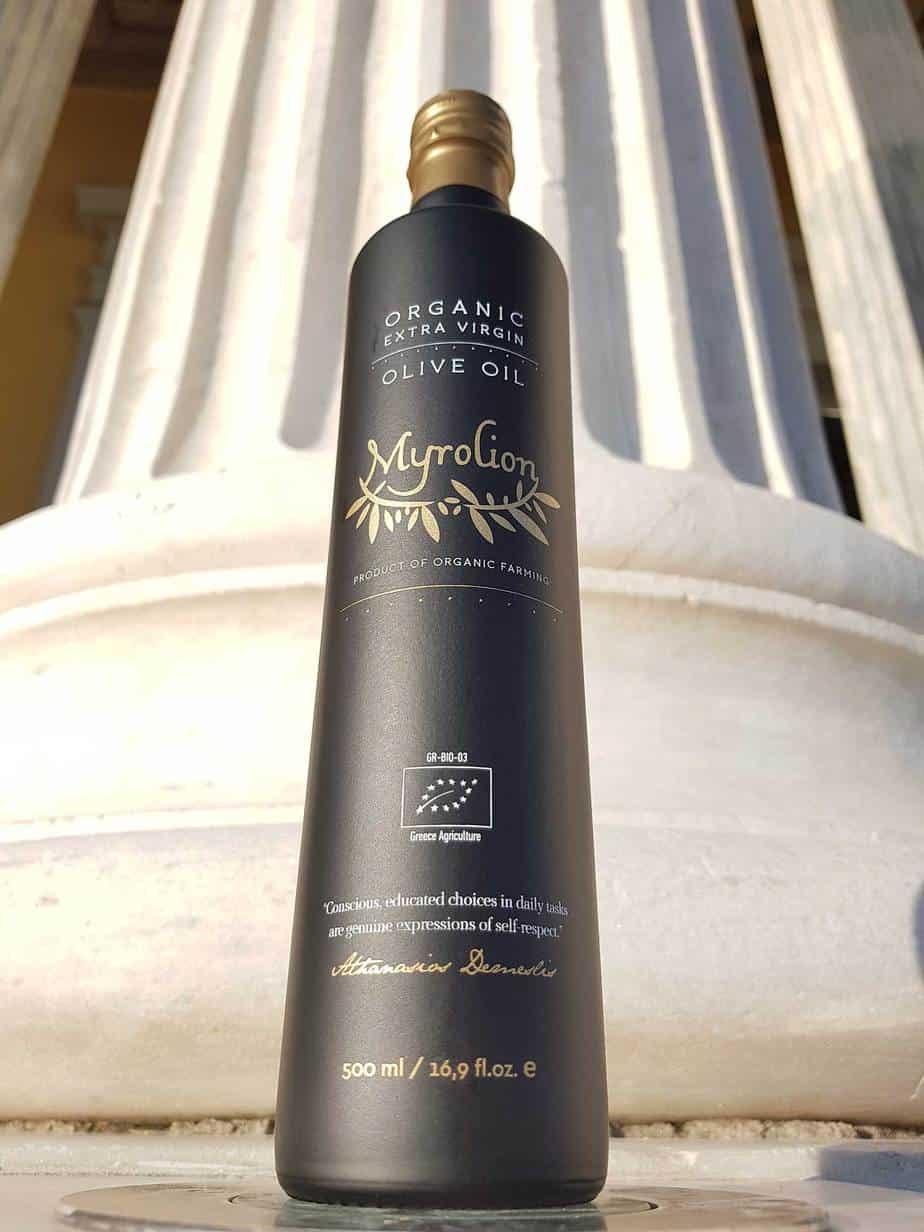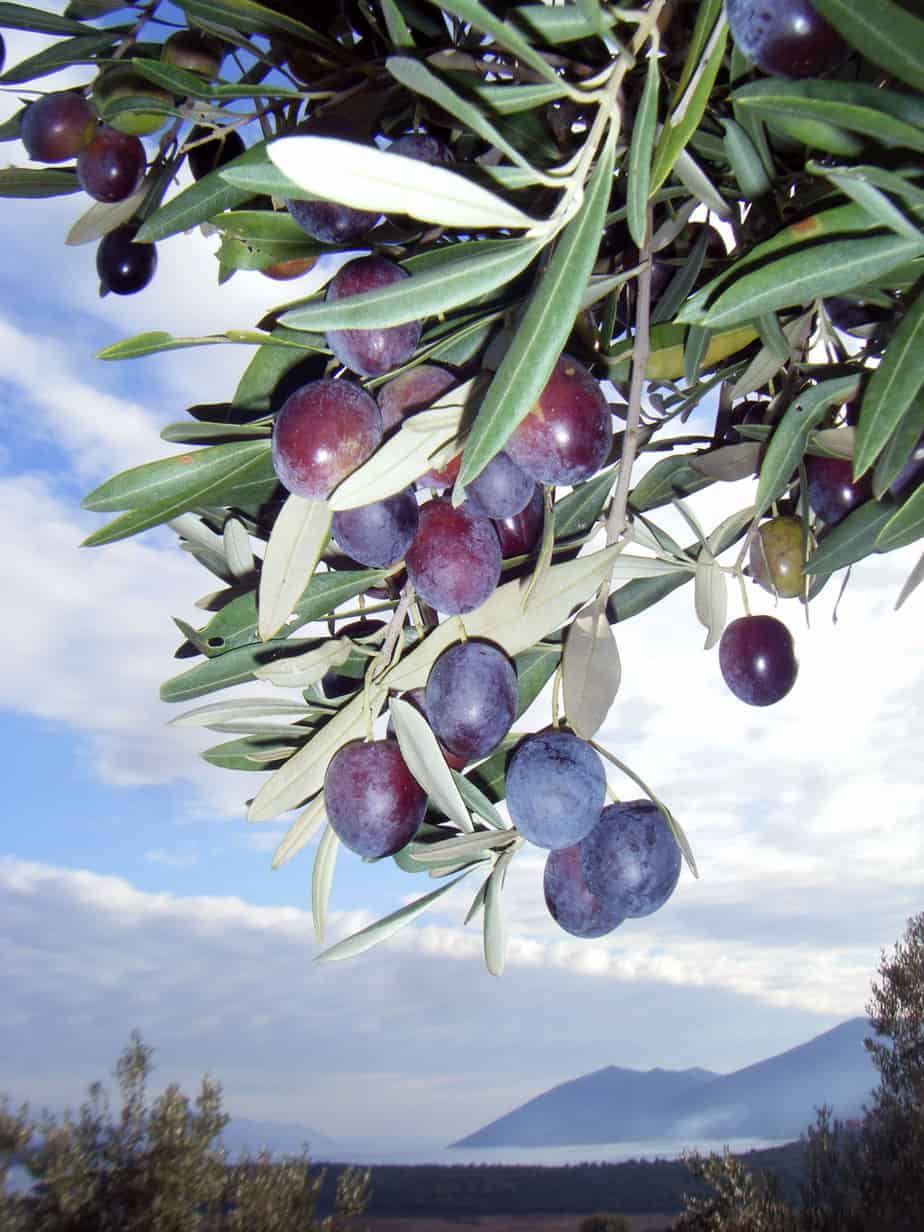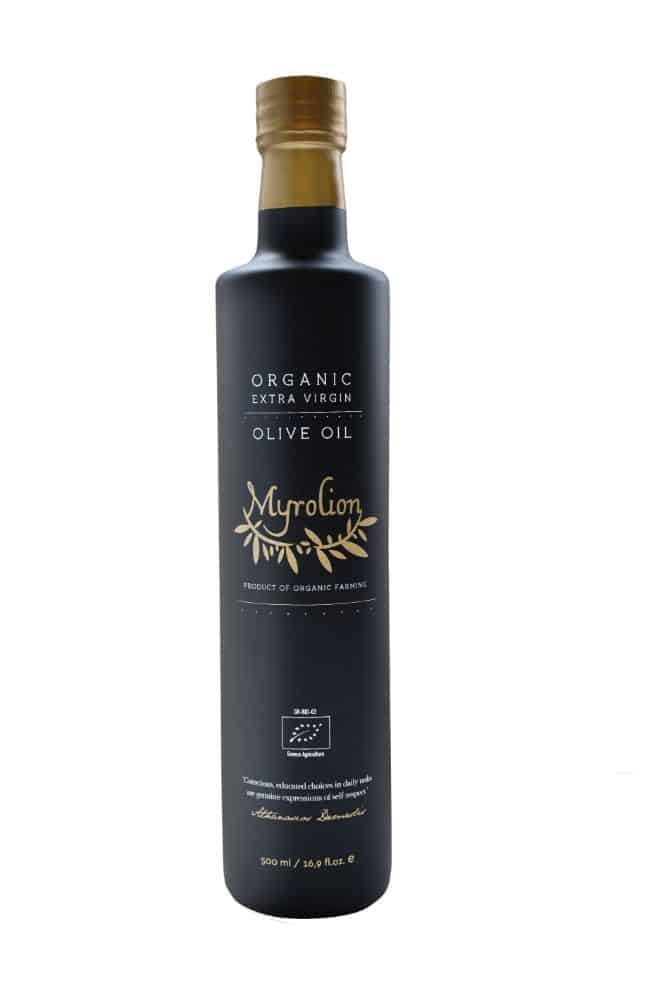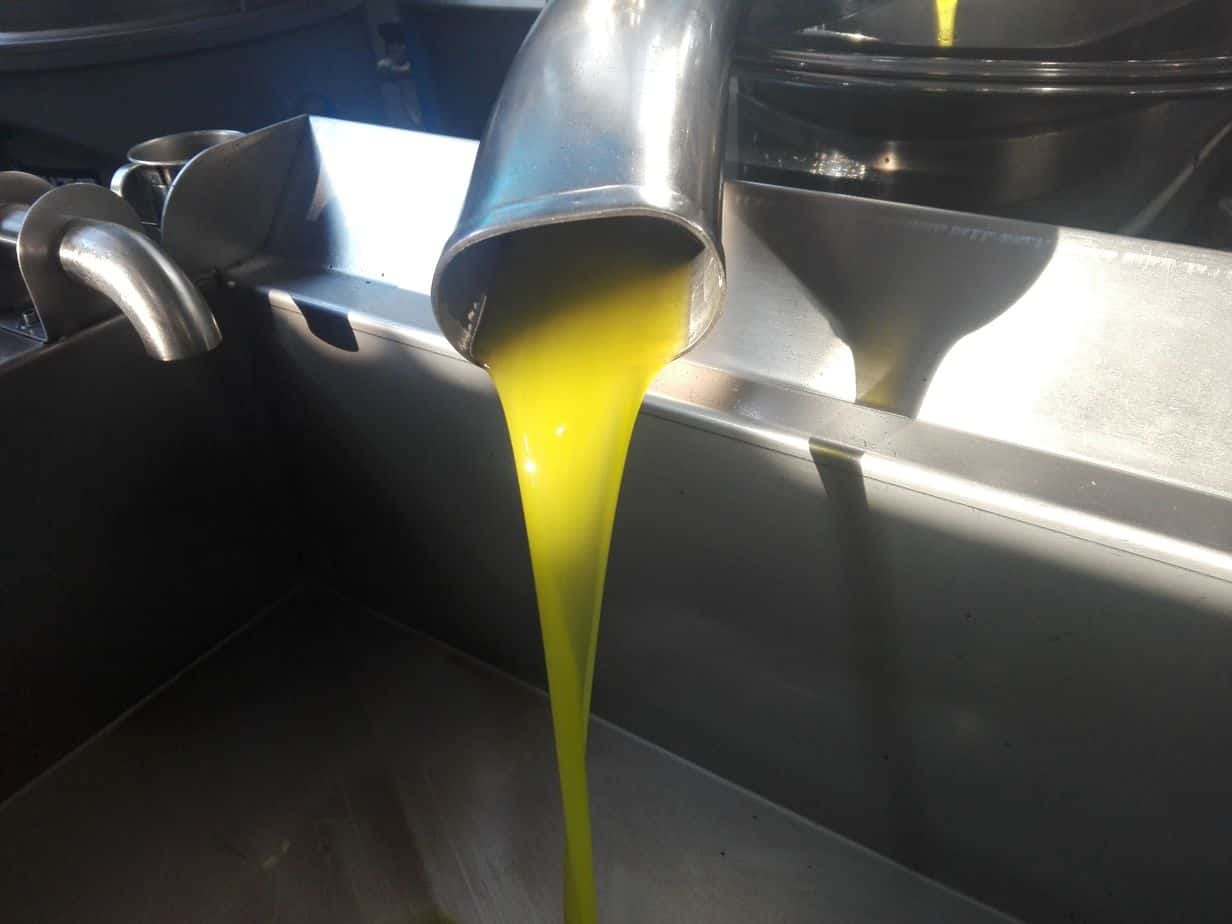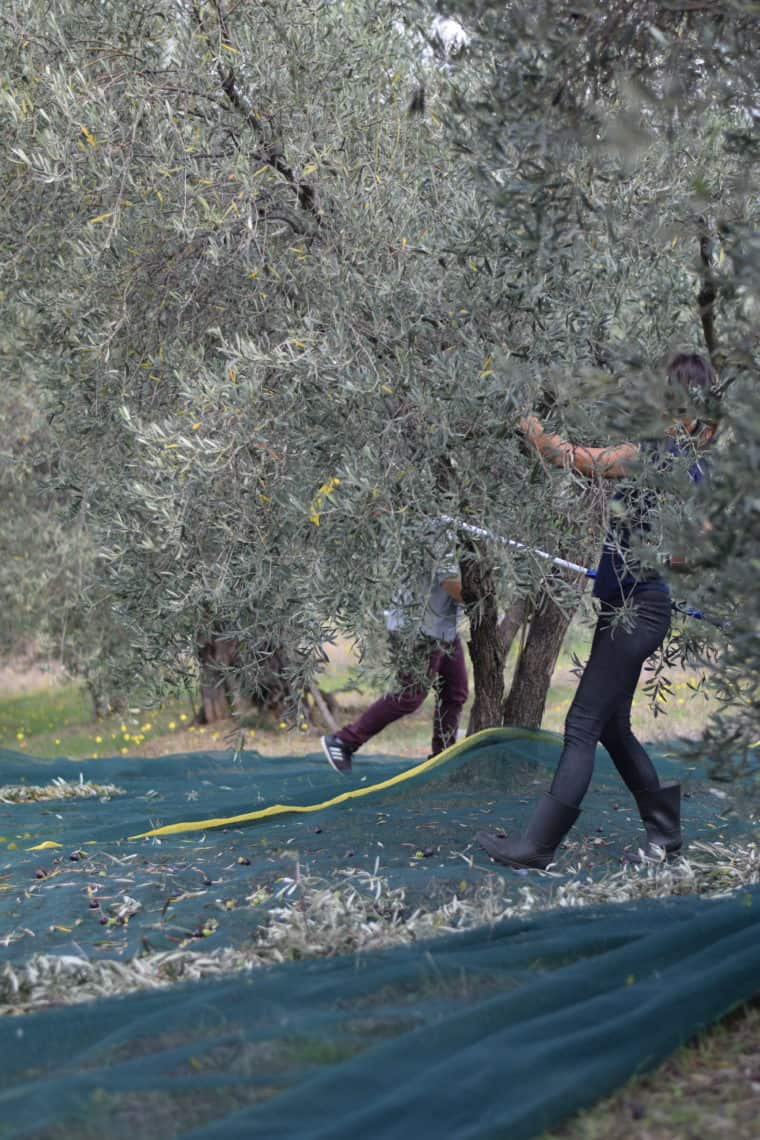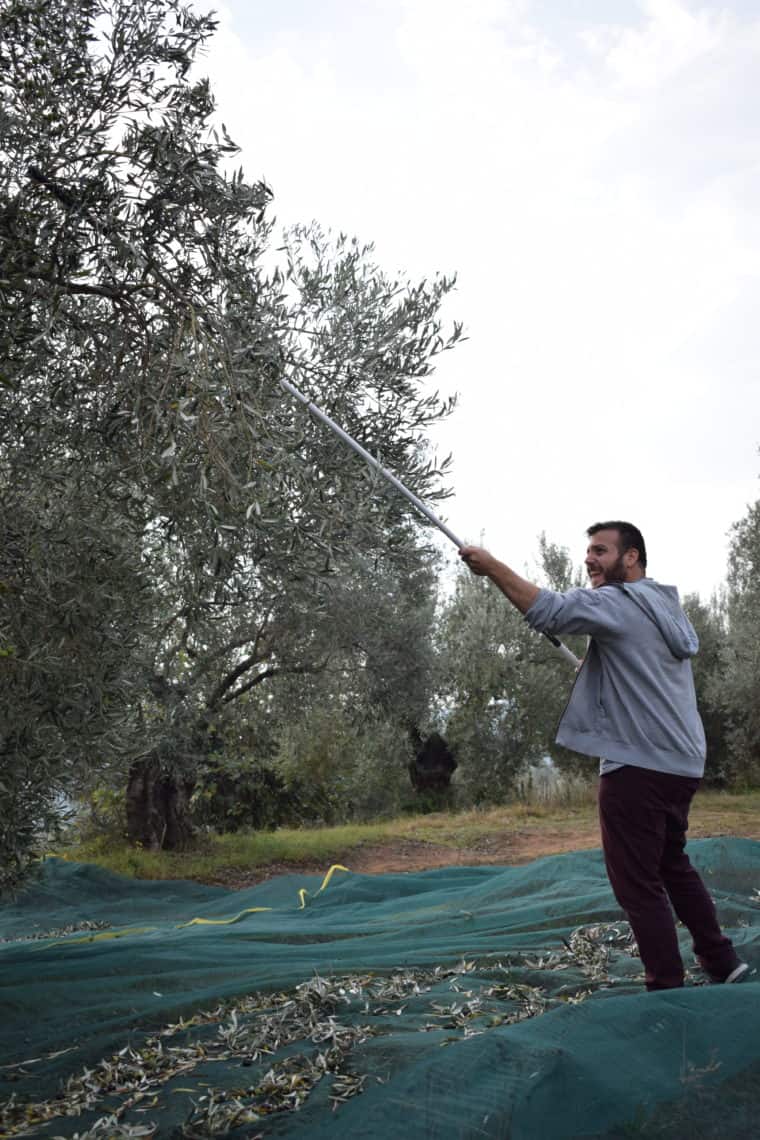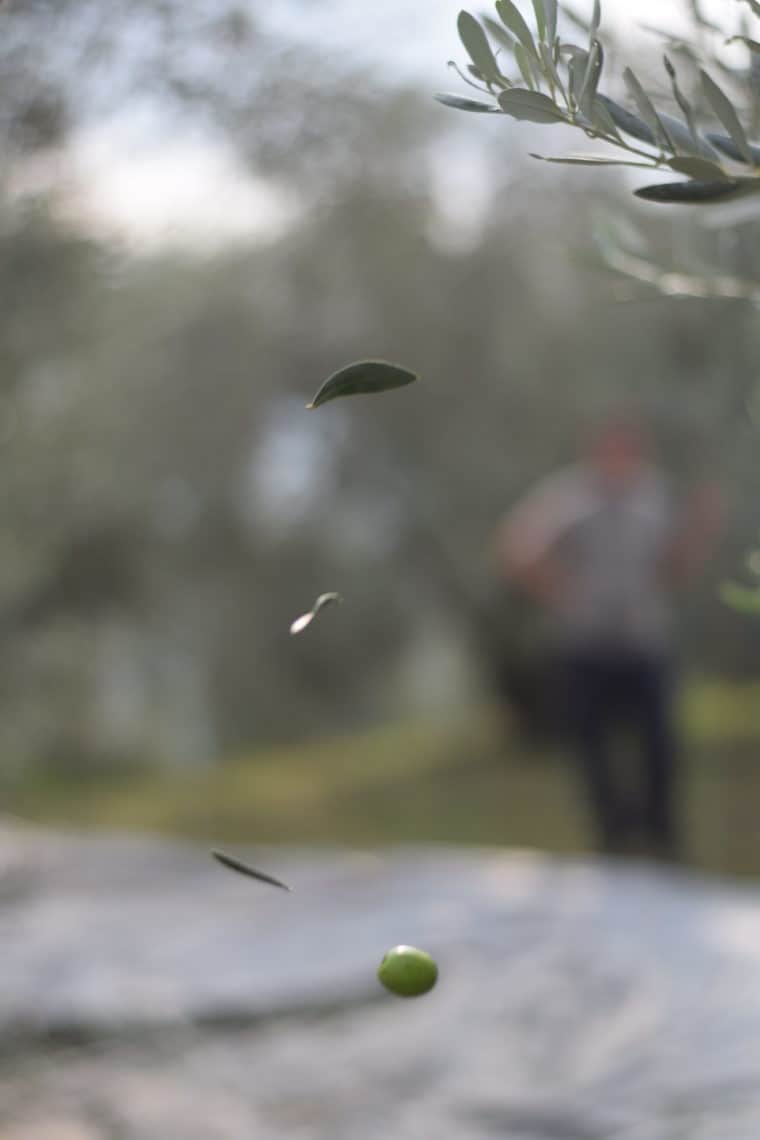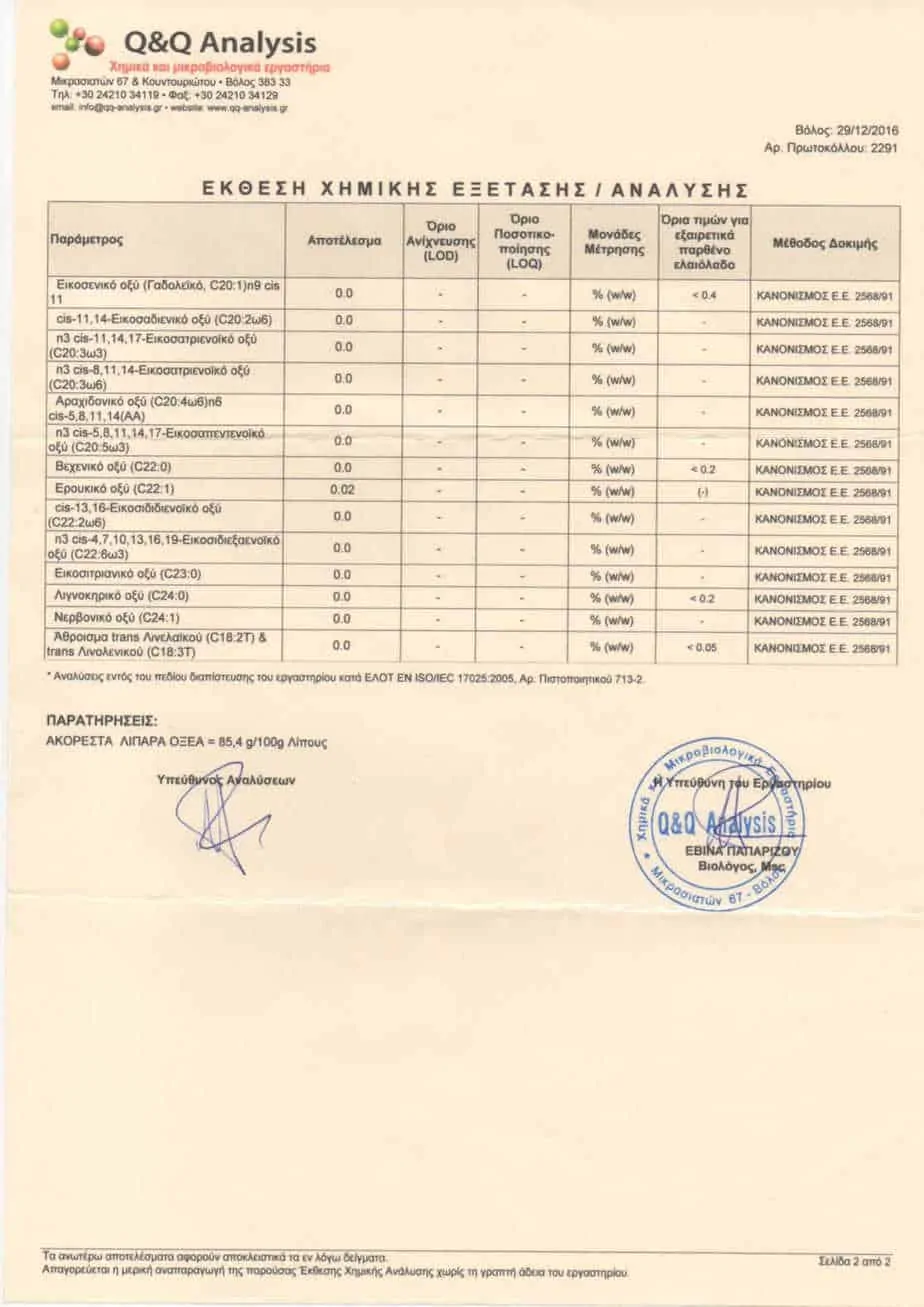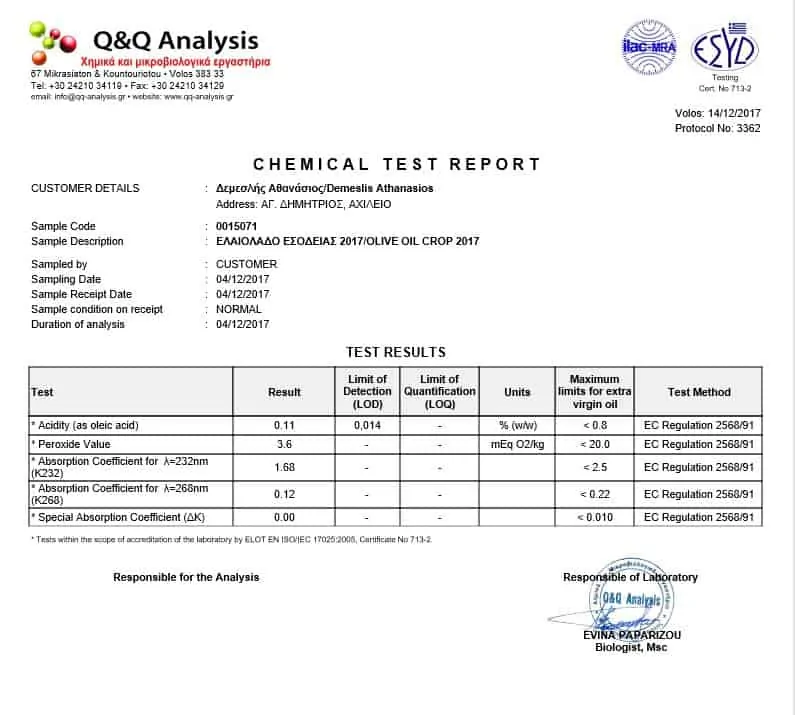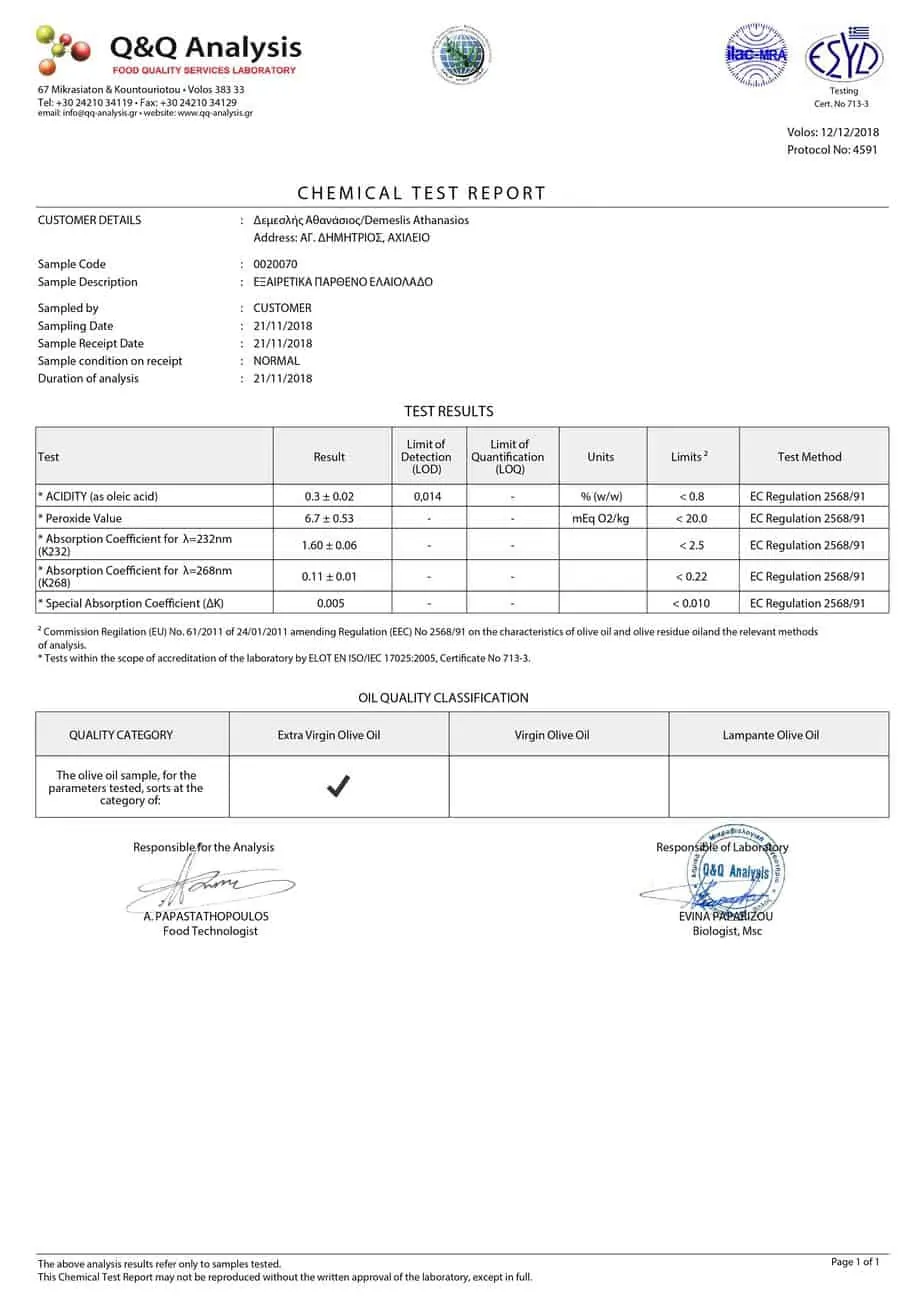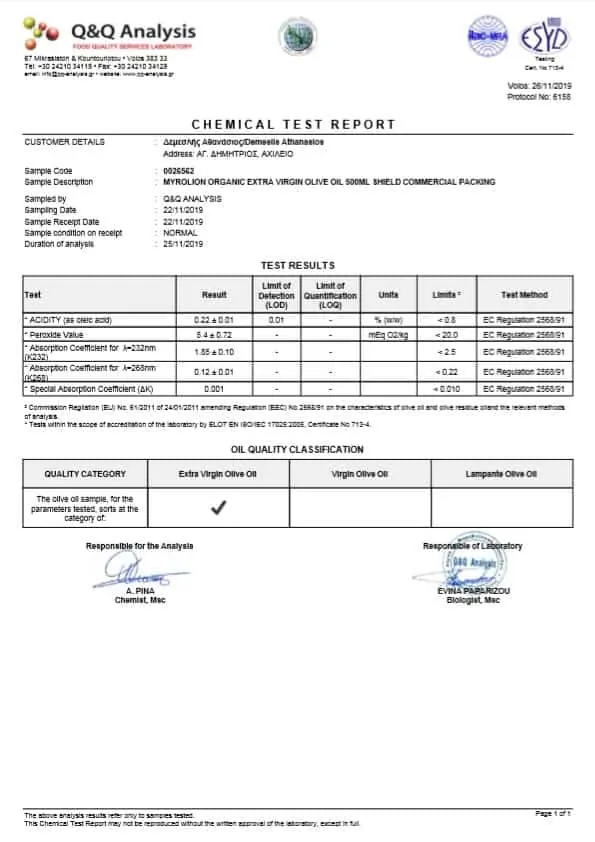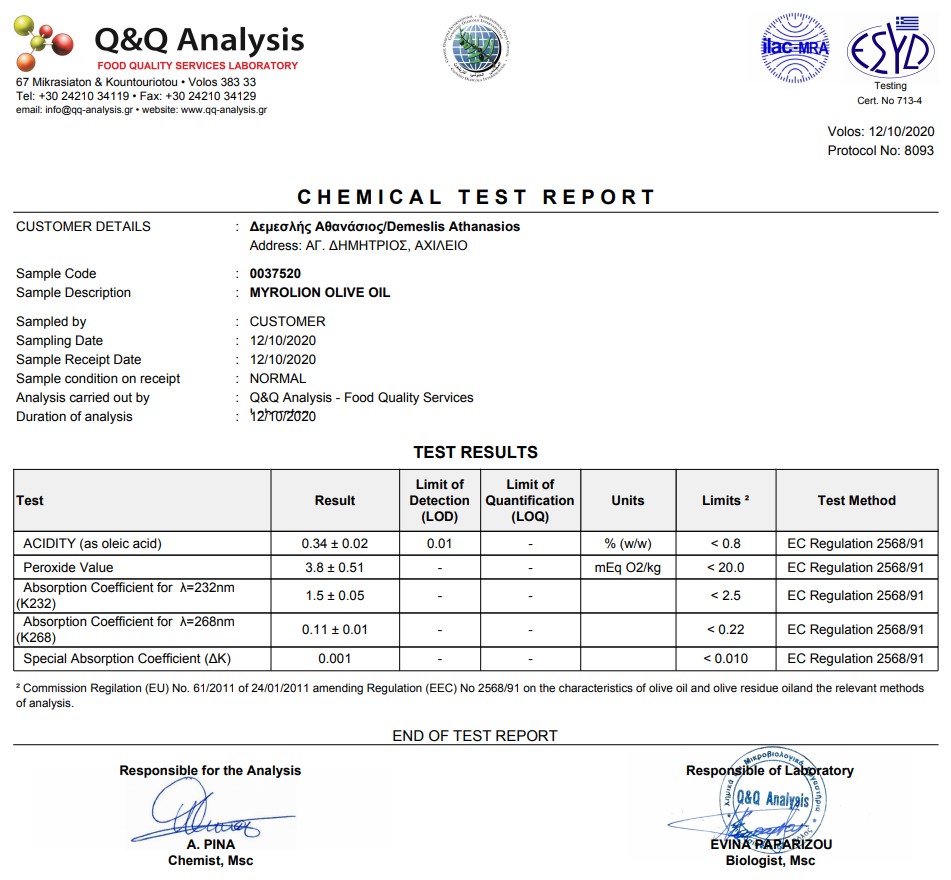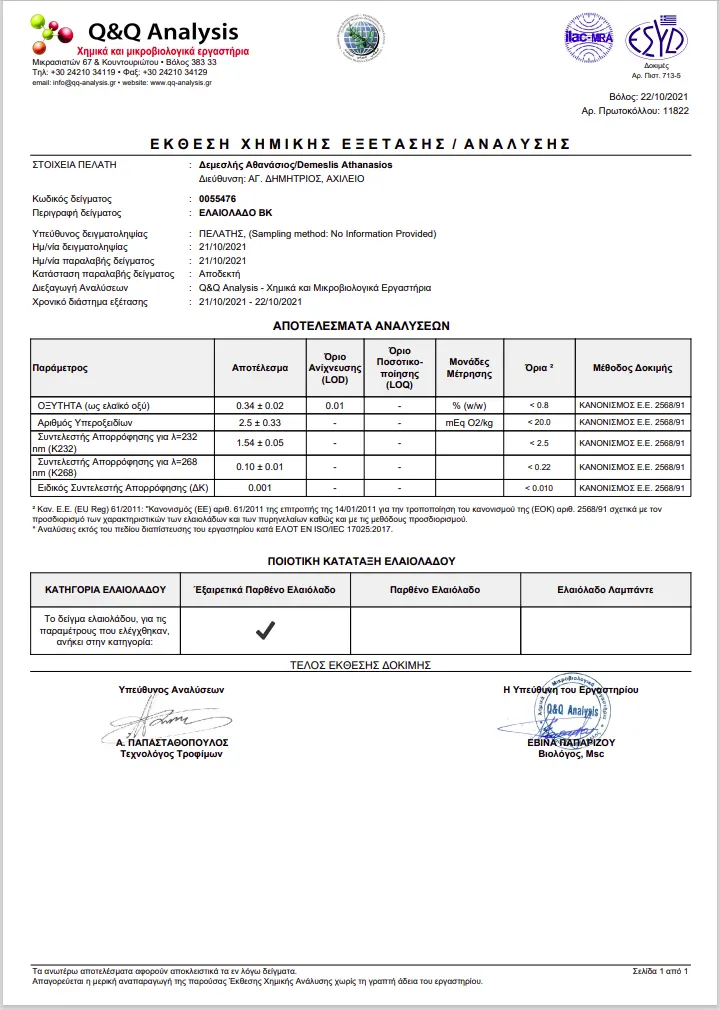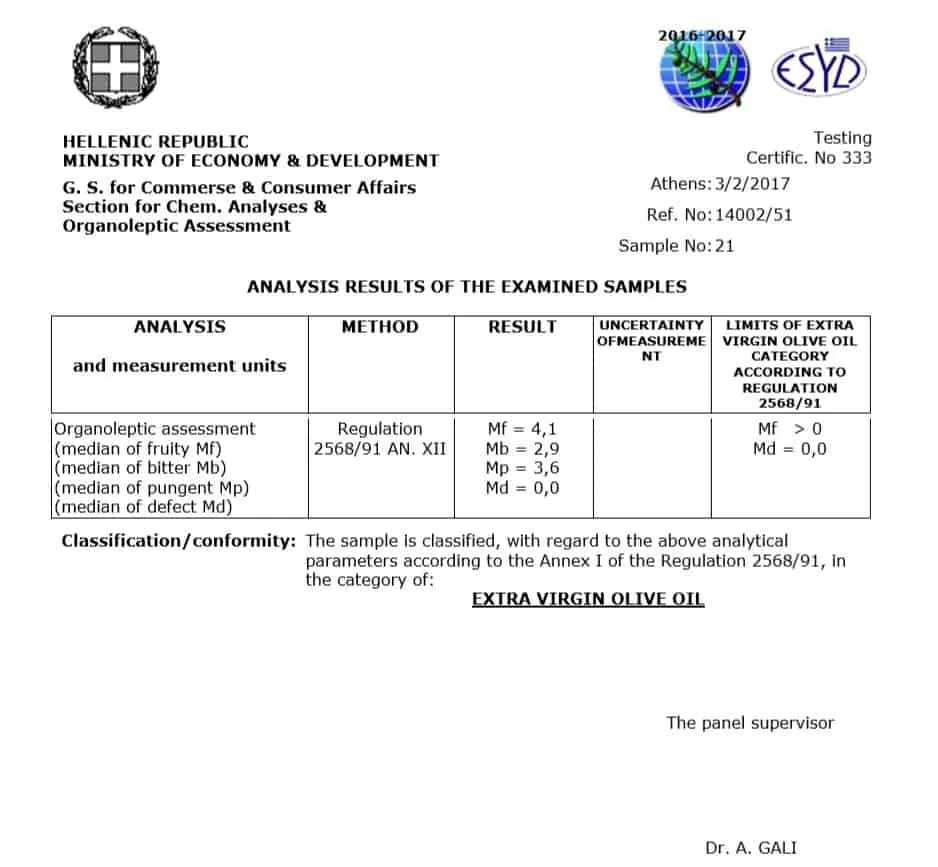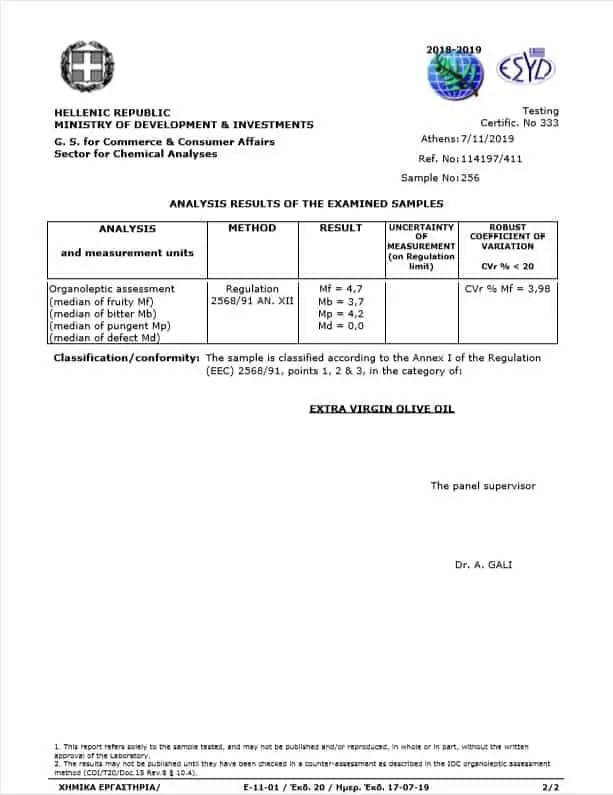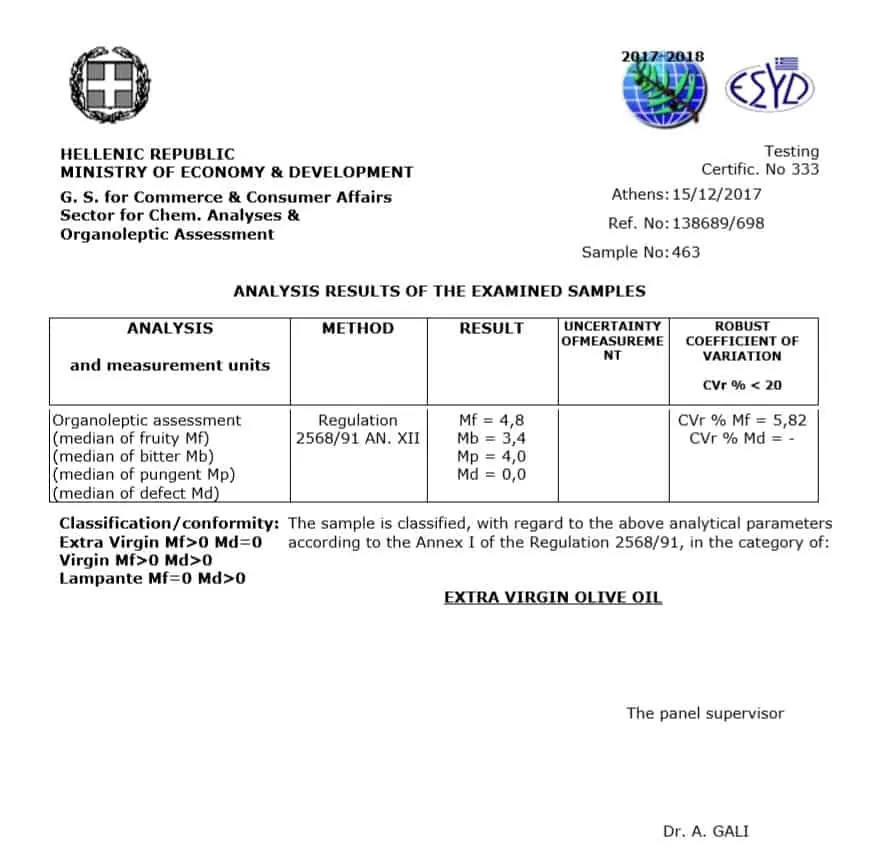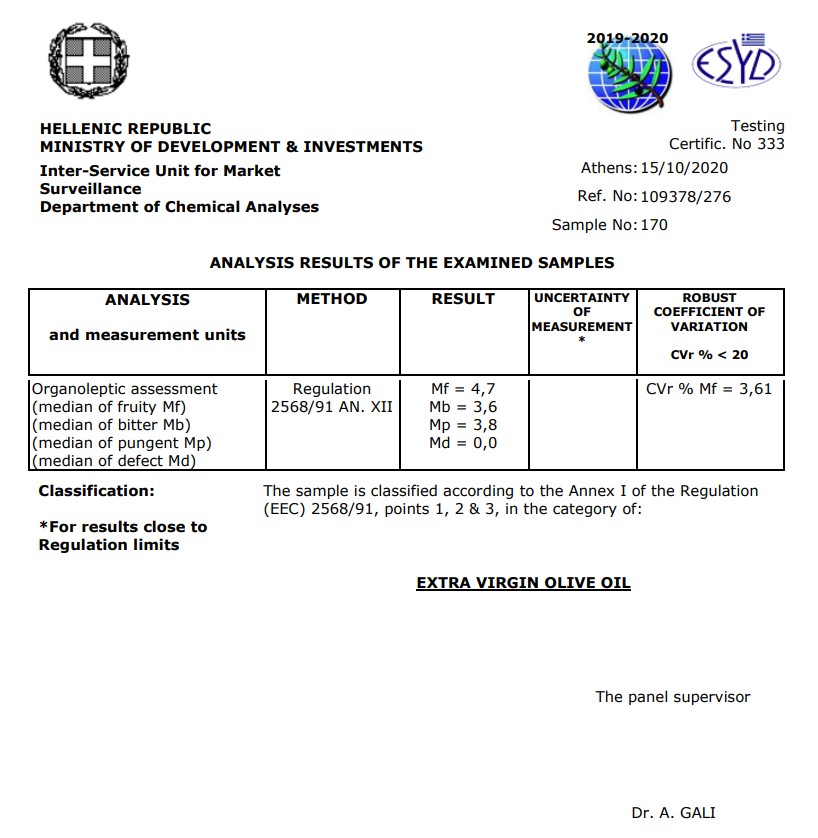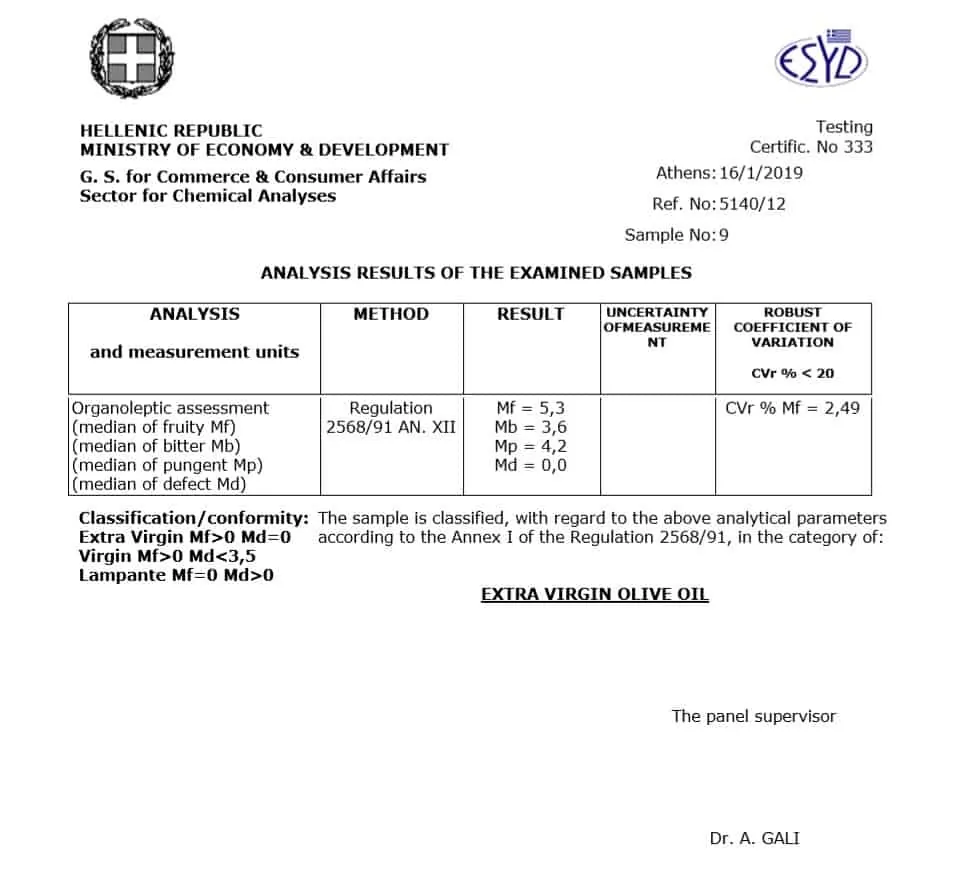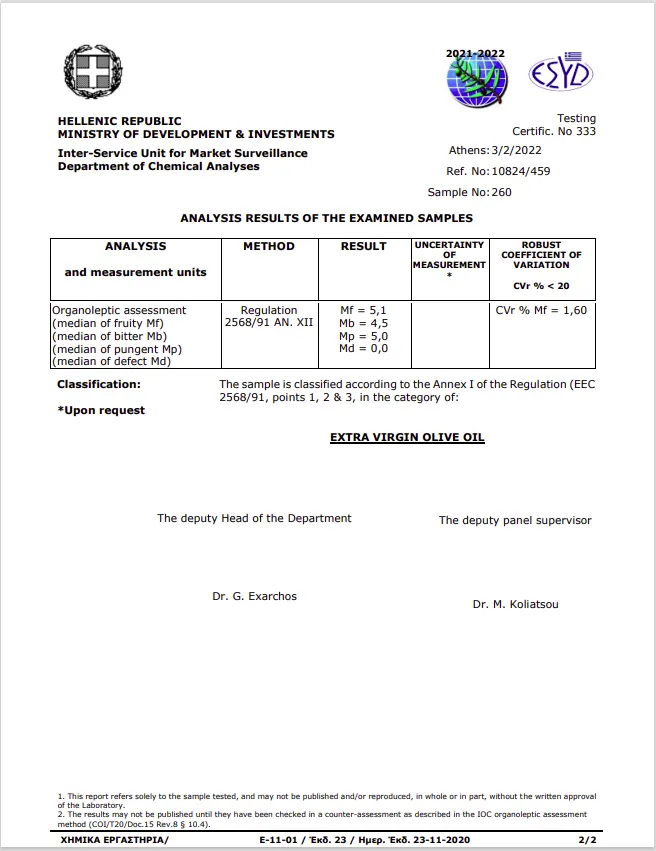Extra Virgin Olive Oil: Your Guide in EVOO
“But is it really Extra Virgin Olive Oil?”
This is the first thing that comes to mind when you stand opposite the olive oil shelf. By the end of this guide, you will be as knowledgeable on EVOO as an article can make you. And if you taste our family’s olive oil, you’ll enjoy the real EVOO experience too.
Lazy? Quick Read.
Key Takeaways on Extra Virgin Olive Oil
1. For olive oil to be graded as Extra Virgin, 5 chemical factors and 4 sensory factors must be within specific ranges simultaneously. Additionally, the way of extraction must be strictly mechanical.
2. In regards to sensory factors the olive oil should be fruity, bitter, pungent and have no defects.
3. Differences between EVOO and other types of olive oil include lower chemical and sensory standards and possibly chemical treatment.
4. EVOO has been found to have numerous health benefits against a plethora of diseases and health conditions. These health benefits are related to EVOO’s fatty acid profile and the amount of polyphenols it may have.
5. EVOO has 125 kCal per tablespoon and is absolutely safe to cook with, including sauteing, deep frying and mild oven cooking. We don’t suggest cooking in very high temperature ovens (above 207 degrees Celsius).
6. For olive oil to be extracted as and remain Extra Virgin a number of practices need to be followed during cultivation, harvesting, pressing and storage.

Author: Athanasios Demeslis
FOUNDER OF MYROLION
This article has been meticulously written by Athanasios to help answer your questions on EVOO.
Years of personal experience with olive tree cultivation and olive oil extraction have been combined with daily studying on EVOO to help you nurture yourself and your loved ones in the best way possible.
What is Extra Virgin Olive Oil?
Real Extra Virgin Olive Oil (EVOO) is undeniably the only type of fat with such a diverse sensory profile. With more than 10 sensory features used to describe olive oil (tomato, almond, green apple, flowers, freshly cut grass, etc.) it will certainly become your favorite type of fat, both for cooking and dressing. Let alone the health benefits. Extra Virgin Olive Oil is the basis of the Mediterranean diet and it’s among the world’s healthiest foods.
According to the International Olive Council, virgin olive oil is the olive oil that has been obtained from the fruit of the olive tree, specifically, Olea europaea L., solely by mechanical or other physical means under conditions, particularly thermal conditions, that do not lead to alterations in the oil, and which have not undergone any treatment other than washing, decantation, centrifugation and filtration.
Extra virgin olive oil has a free fat acidity, expressed as oleic acid, of not more than 0.8 grams per 100 grams, and the other characteristics of which correspond to those fixed for this category in the IOC standard.
Let’s look into the details of that;
How is Extra Virgin Olive Oil Certified?
The certification process of extra virgin olive oil (EVOO) has two sections; i) Chemical Analysis:The chemical features of the olive oil are tested by a certified laboratory that validates whether the extra virgin standards are being met. Which are the chemical extra virgin standards?| Chemical Property | Extra Virgin Limit |
| Acidity (Free Fatty Acids) | < 0.8 % |
| Peroxides | < 20 mEq O2/kg |
| K232 | < 2.5 |
| K270 | <0.22 |
| ΔΚ | < 0.01 |
If you want to know what K270, K232 and Peroxides are, then just take our free course and win a discount on Myrolion as a reward for your curiosity!
ii) Sensory Analysis: A panel of highly experienced, certified connoisseurs tests the olive oil’s organoleptic features, such as fruitiness, pungency, bitterness and also look for potential presence of defects. Which are the sensory extra virgin standards?
| Sensory Feature | Extra Virgin Limit |
| Fruitiness | Mf > 0 |
| Bitterness | Mb > 0 |
| Pungency | Mp > 0 |
| Defects | Md = 0 |
This means that for olive oil to be considered extra virgin at least some fruitiness, bitterness and pungency need to be present, while no defects should be experienced, at all.
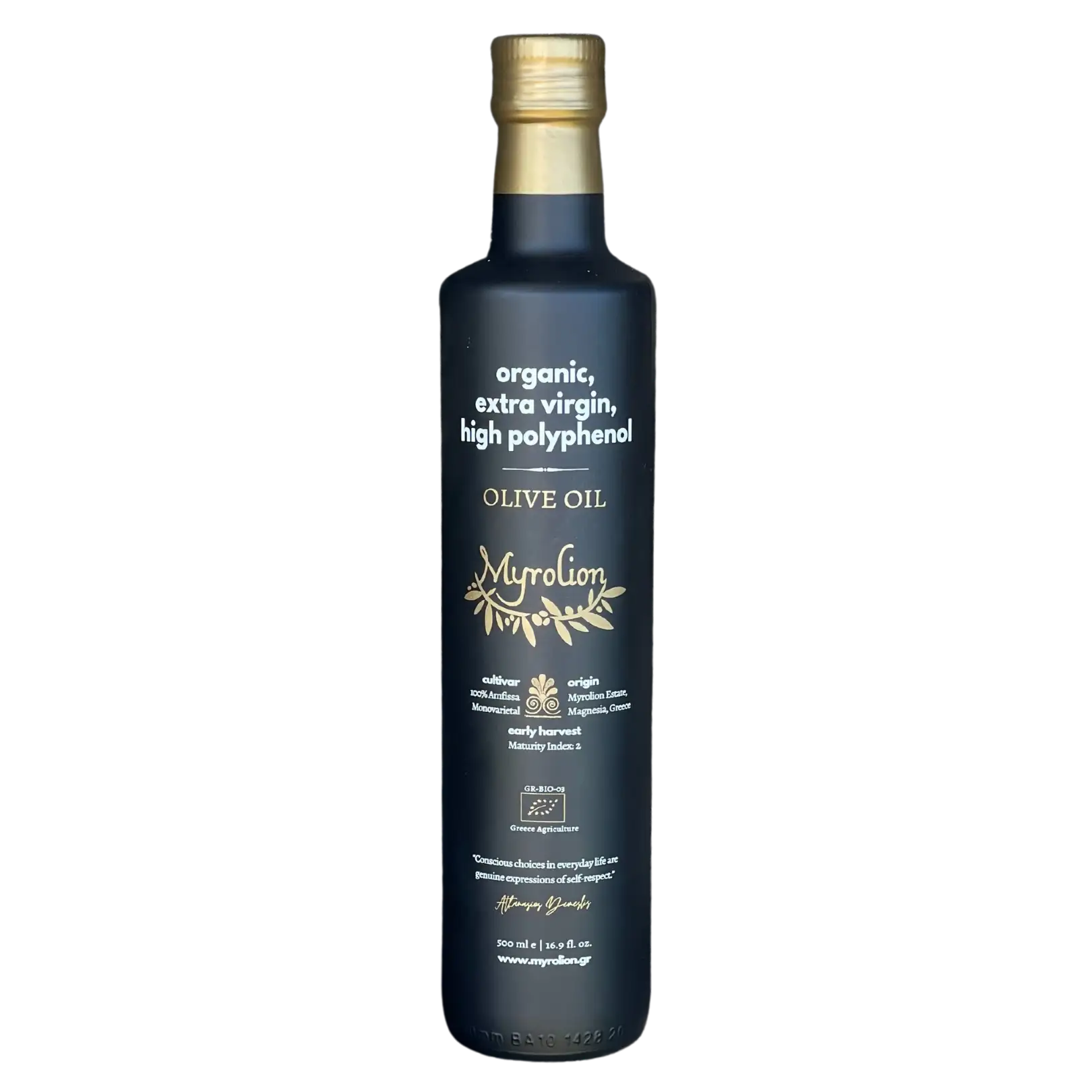
What is the Fatty Acid Composition of Extra Virgin Olive Oil?
EVOO has 100% fat content, and consists of a plethora of healthy fats, including monounsaturated fatty acids, specifically:
%
Unsaturated Fat
%
Saturated Fat
Oleic Acid ω9: 73.35%
Oleic acid is classified as a monounsaturated omega-9 fatty acid. It is by far the dominant type of fat in EVOO, and that’s great news.It has been associated with decreased low-density lipoprotein (LDL) cholesterol, and possibly increased high-density lipoprotein (HDL) cholesterol. Additionally, it was found that oleic acid is responsible for the reduction in blood pressure induced by olive oil. Finally, the consumption of oleates (salts and esters of oleic acid) through olive oil has been associated with a decreased risk of breast cancer.
Palmitic Acid: 11.66%
It is the most common saturated fatty acid found in animals, plants and microorganisms. It is typically found in large concentrations in palm oil and coconut oil. According to the World Health Organization, palmitic acid raises LDL cholesterol more than other saturated fats and also claim that convincing evidence that high consumption of palmitic acid can increase the risk of cardiovascular disease. However, due to its low concentration it is not very easy to excessively consume palmitic acid through olive oil, especially in comparison to coconut oil which is 92% saturated fat.
Linoleic Acid ω6: 9.91%
Linoleic acid is a polyunsaturated omega-6 fatty acid. It is an essential fatty acid for humans, who must obtain it through their diet. It is used in the biosynthesis of prostaglandins and cell membranes. Various clinical trials have shown that replacing saturated fat with linoleic acid reduces total and LDL cholesterol. There is also some evidence that polyunsaturated fats improve insulin sensitivity and blood pressure. Even though linoleic acid is an essential acid, excessive consumption, especially through nut oils, has been linked to various diseases. This proves in effect that balance is everything.
Stearic Acid: 2.45%
Stearic acid is a saturated fatty acid with an 18-carbon chain. In the Food Industry it is typically used as a natural preservative, since it has been proven safe for consumption. Additionally, in epidemiologic and clinical studies, stearic acid was found to be associated with lowered LDL cholesterol in comparison with other saturated fatty acids. Finally, when it comes to skin care, it has been shown to protect skin’s surface against water loss and help shore up skin’s protective barrier. This is why many of our customers prefer to apply Myrolion’s last drops on their skin!
Palmitoleic Acid: 0.79%
Palmitoleic acid is produced by desaturation of palmitic acid. It is an omega-7 monounsaturated fat and as a result, an important fatty acid for pharmaceutical applications. It is postulated to have anti-thrombotic effects, which can help prevent stroke. Palmitoleic acid has been reported to have beneficial effects on insulin sensitivity, cholesterol metabolism, and hemostasis. It has been proposed that palmitoleic acid may prevent beta-cell apoptosis induced by glucose or saturated fatty acids. Other positive effects reported include lower LDL cholesterol and higher high-density lipoprotein cholesterol (HDL).
Heptadecanoid Acid: 0.04%
Heptadecanoic acid, or margaric acid, is a fatty acid that is typically found in vegetables in trace quantities. It has a biological role as a mammalian metabolite, a Daphnia magna metabolite and an algal metabolite. It is a long-chain fatty acid and a straight-chain saturated fatty acid. It is a conjugate acid of a margarate.
Myristic Acid: 0.01%
It is a common saturated fatty acid. It occurs naturally on most vegetables. Its excessive consumption has been correlated with increased cholesterol levels. However, research also points to myristic acid’s positive effects on HDL cholesterol and hence improving HDL (good cholesterol) to total cholesterol ratio. In any case, its concentration in EVOO is almost non-existent.
Free Fatty Acids
When olive oil is exposed to hostile conditions, like oxygen and light, it is possible that some bonds may break between fat molecules. As a result a free fatty acid is created. If this keeps happening many of those free acids form and as a result the acidity level increases, leading to sensory defects. This is why it is very important to store your EVOO in very good conditions.
What are the Health Benefits of Extra Virgin Olive Oil?
There has been so much research on revealing the health benefits of EVOO that is literally very hard to track all of those scientific papers out there.
It is safe to claim at this point that EVOO, and especially EVOO with high phenol content, is among the world’s healthiest foods, with major benefits against metabolic syndrome, offering reduced risk of cancer, type 2 diabetes, chronic inflammation, etc.
We believe that it is important to understand where the benefits derive from.
Some benefits are the result of the olive oil’s chemical structure itself; the fatty acids (oleic, linoleic, etc.)
Others are the result of the olive oil’s polyphenol concentration. If the olive oil is cold pressed then it is possible that it will yield a high amount of powerful antioxidants, in the form of phenolic compounds. Polyphenols have been proven to protect the blood lipids against oxidative stress, according to EU Regulation 432/2012. This is actually known as the “Olive Oil Polyphenols Health Claim”. The health claim also suggests that the beneficial effects are to be received with 1 + 1/2 tablespoons of high phenolic olive oil every day.
Other EVOO health benefits include:
What Should Extra Virgin Olive Oil Taste Like?
And this is the point where it gets spicy, literally and metaphorically. You see, even though EVOO can be extremely diverse in terms of aroma and flavour, there are certain things it should not taste like. According to Dan Flynn from the Olive Center of UC Davis, in a sensory study that was conducted in 2013, 44% of consumers preferred defective olive oil flavors, like rancidity. Of course, they did not know that these were defective olive oils, however they had been conditioned to believe that this is the real deal, after being overwhelmingly exposed to defective olive oils in the market. So, what does real EVOO taste like? The three dominant features of EVOO are fruitiness, bitterness and pungency. Here is a list of a positive sensory features:- Almond: light smell recalling that of fresh or dried almond.(Myrolion has this)
- Apple: a sensation recalling this fruit.
- Artichoke: a smell recalling raw artichoke. (and this)
- Astringent: a puckering sensation in the mouth created by tannin.
- Bitter: this is a preferred characteristic taste of olive oils, if it is not too highly intense, and is connected to polyphenols, its natural antioxidants. (and some of this)
- Fruity: range of cultivar-dependent aromas characteristic of oil from healthy fresh fruit, green or ripe, perceived directly and/or retro nasally. Fruitiness is qualified as green if the range of smells is reminiscent of green grass. Fruitiness is qualified as ripe if the range of smells is reminiscent of ripe fruit and is characteristic of oil from green and ripe fruit. (and a lot of this)
- Green grass: a sensation recalling that of freshly cut grass.
- Hay: a smell recalling that of dried grass.
- Spicy: a tactile sensation similar to that of a light chilli pepper, especially in the back of the throat, which can force a cough. (and just the right amount of this)
- Brine: salty taste of oil made from brined olives.
- Coarse: a tactile sensation in the mouth due to texture of oil.
- Cucumber: off flavour from prolonged storage, particularly in tin.
- Dreggiest: odour of warm lubricating oil and is caused by the poor or lack of the decanting process.
- Earthy: this term is used when oil has acquired a musty humid odour because it has been pressed from unwashed, muddy olives.
- Esparto: hemp-like smell acquired when olive paste has been spread on Esparto mats. Smells may differ according to whether the mates are green or dried.
- Hemp: caused by the use of filtering panels, which are not perfectly clean, and recalls hemp.
- Flat: oils which have lost their characteristic aroma and have neither taste nor smell.
- Frozen: due to olives which have been exposed to freezing temperatures. When cooked, this oil gives off very unpleasant odours.
- Fusty: due to olives fermenting in piles while in storage waiting to be pressed.
- Grubby: smell imparted by grubs of the olive fly. The smell is both rotten and putrid at the same time.
- Heated: prolonged heating during extraction processing.
- Muddy: typical odour of oil that has been stored to long on its own sediment.
- Musty: mouldy smell from olives being stored too long before pressing.
- Metallic: oils processed or stored with extended contact to metal surfaces.
- Rancid: old oils that have started oxidizing due to exposure to light or air.
- Vegetable water: oils that have absorbed the unpleasant odours and flavours of the vegetable water after pressing that they have remained in contact for too long.
- Wine-vinegar: typical odour of wine or vinegar due to fermentation of olives.
Can I Cook with Extra Virgin Olive Oil?
This question can be answered from two different perspectives.
First of all, it is true that if olive oil gets really heated the bonds between the various fat molecules can break down, leading to potentially harmful products. However, EVOO has a very high smoke point that can tolerate sauteing, oven baking and even deep frying. Also, the higher the quality of the EVOO the higher the smoke point.
Cooking Temperatures:
Pan Frying
Oven Baking
Deep Frying
High Quality Extra Virgin Olive Oil Smoke Point:
EVOO Smoke Point
This means that cooking with olive oil is safe and you also receive EVOO health benefits that are related to the fatty acid profile of olive oi. However, as hot and very hot ovens can cook anywhere from 200°C to 260°C know that with this kind of ovens it is possible for olive oil to reach its smoke point and thus is not suitable for cooking in so high temperatures.
So, while EVOO maintains its structural profile, the same cannot be said that EVOO health benefits that derive from its phenolic profile. For olive oil to preserve its natural antioxidants it needs to be extracted below 27°C (cold-extraction). So, polyphenols naturally decline with heating.
So, if you want to stay on top of value-for-money, you could probably use a High Phenolic Organic Extra Virgin Olive Oil, like Myrolion, that is capable to deliver polyphenol related benefits even after cooking.
Polyphenols remain in the olive oil after cooking, and actually make the overall meal healthier, to the point that scientists claim it is healthier to fry veggies in olive oil than boiling them!
So after all, it is your choice. If you can afford it stick with a High Phenolic Organic EVOO like Myrolion, for all uses. If not, a mid range will do for cooking.
My personal favorite way to enjoy EVOO is with fish or salads. The delicate flavor of Greek olive oil makes it a perfect match for the Mediterranean Diet. Feel free to explore our family’s age old recipes to enjoy your fruity olive oil in the way we do
How Do We Keep Myrolion Extra Virgin?
Extra Virgin Olive Oil Cultivation Process
i) Maximize Yields
ii) Ensure Fruit Quality
iii) Ensure Biodiversity
In the era of Climate Change, olive tree farming is not just about food production any more. Of course, to ensure financial sustainability of our family business, we need to ensure sufficient fruit production, but not on the expense of consumer safety and environmental stability.
Securing high quality fruit means that we need to create fully healthy olive fruit, without wounds, lack of nutrients and of course complete absence of herbicides or pesticides. This is why we employ organic practices of cultivation.
Biodiversity is the key concept of a healthy habitat. In that context, we strive to cultivate our trees as part of a greater ecosystem. This means that a great deal of our focus is given on soil health. On of our greatest key metrics, is soil biology diversity. We do that by adopting regenerative agriculture practices.
When approximately 80% of our olives are in index 2 of maturity, harvesting time has come!
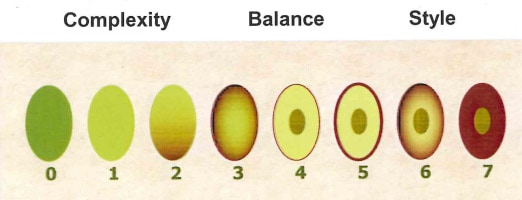
Olive Fruit Maturity Index
Extra Virgin Olive Oil Harvesting Process
Timing of harvest is a very crucial factor in the resulting olive oil quality. For example, maturity levels affect both concentration of health-protecting polyphenols and concentration of olive oil per fruit. As a matter of fact, from a point and on, the more the fruit ripen, the more oil concentration increases and the more polyphenol concentrations decrease.

Olive Fruit Maturity Index
For this reason, we choose to harvest our olives when approximately 80% of them is in maturity index 2. Our observations over the years, and various studies, show that when the olive fruit starts turning red / purple, both polyphenols and olive oil concentration hit the sweet spot. Making that choice, we potentially do not receive maximum olive oil yields, however we do this consciously, since we prefer to secure our olive oil’s healthy properties for our customers.
Quality Factors while Harvesting:
i) We hand-pick olives or use the traditional wooden rods called “luros” that are designed to not hurt the fruit, branches or leaves. We do not use fossil-fuel powered equipment, since this could increase the risk of mineral oils sticking on the fruit and thus contaminating the olive oil. On top of that, we do not release unnecessary CO2 on the atmosphere.
ii) We let olive fruit fall on plastic-free nets which are perforated and neither destroy the vegetation below, nor cause increased temperatures that can affect olive fruit quality.
iii) Olives are then stored in perforated trays that allow air to go through, eventually not increasing humidity and temperature, while not allowing CO2, naturally resulting from olive fruit breathing, to concentrate and affect fruit quality.
Pressing Process
Pressing should be taking place as soon as possible, once the olives have been cut off of the tree. In Myrolion, we typically start pressing olives on the same day or 24-hours later, at a maximum.
The choice of an appropriate olive mill is fundamental and a number of consideration should be taken into account for the malaxation process.
i) We minimize time between harvesting and malaxation, we never go more than 24 hours.
ii) A 2-phase extraction system, clearly favours high phenolic concentrations as compared to the 3-phase system. In a 3-phase system, the amount of water provided greatly limits polyphenol compounds in the oil. This is why we now press our olives in a 2-phase olive press.
Malaxation Temperature
The malaxation temperature must be sufficiently low to minimize the enzymatic bio-transformation of the polyphenols by the action of peroxidases and phenoloxidases. This bio-transformation is minimized If the temperature of the process does not exceed 28 degrees Celsius, essentially allowing us to create cold-pressed olive oil.
On the other hand, the enzymatic activity of glucosidases and esterases, the main enzyme involved in the bio-transformation of oleuropein and ligustroside, does not trigger below 24 degrees Celsius. Therefore, the temperature range should be controlled for the entire extraction process between 25-28 degrees Celsius.
Duration of Malaxation
The general trend is that the malaxation time should not exceed 45′-60′, although it’s a parameter that depends on the olive fruit variety. We typically keep malaxation duration at a maximum of 30′.
Our liquid gold, having the chance to taste it as it comes out is a true privilege.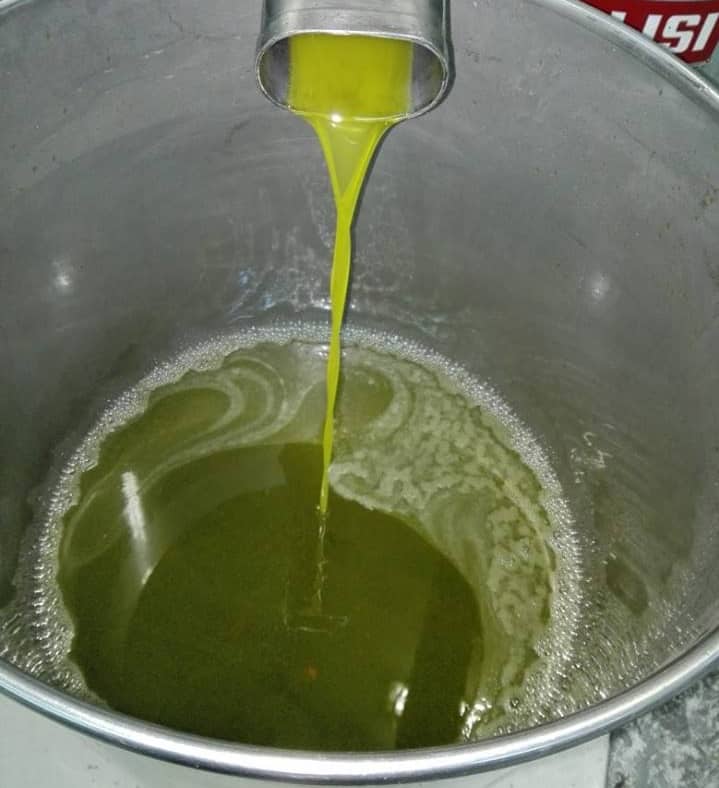
Storing is Crucial
Olive oil storage is another crucial factor for the resulting olive oil quality.
In Myrolion, we make sure to filter our fresh olive oil within 3 days from production, in order to protect the olive oil polyphenols from hydrolysis and to increase the shelf-life of our product.
After this our fresh extra virgin, organic, high-phenolic olive oil is stored in 500lt stainless containers.
Storage Conditions:
i) Lack of Oxygen
ii) Lack of Light
iii) Lack of Humidity
iv) Up to 18 degrees Celsius
This process ensures that our olive oil will have maximum shelf-life and will remain safe, luscious and healthy until we share it with our friends!
Myrolion in Exopolis – Griechische Spezialitäten